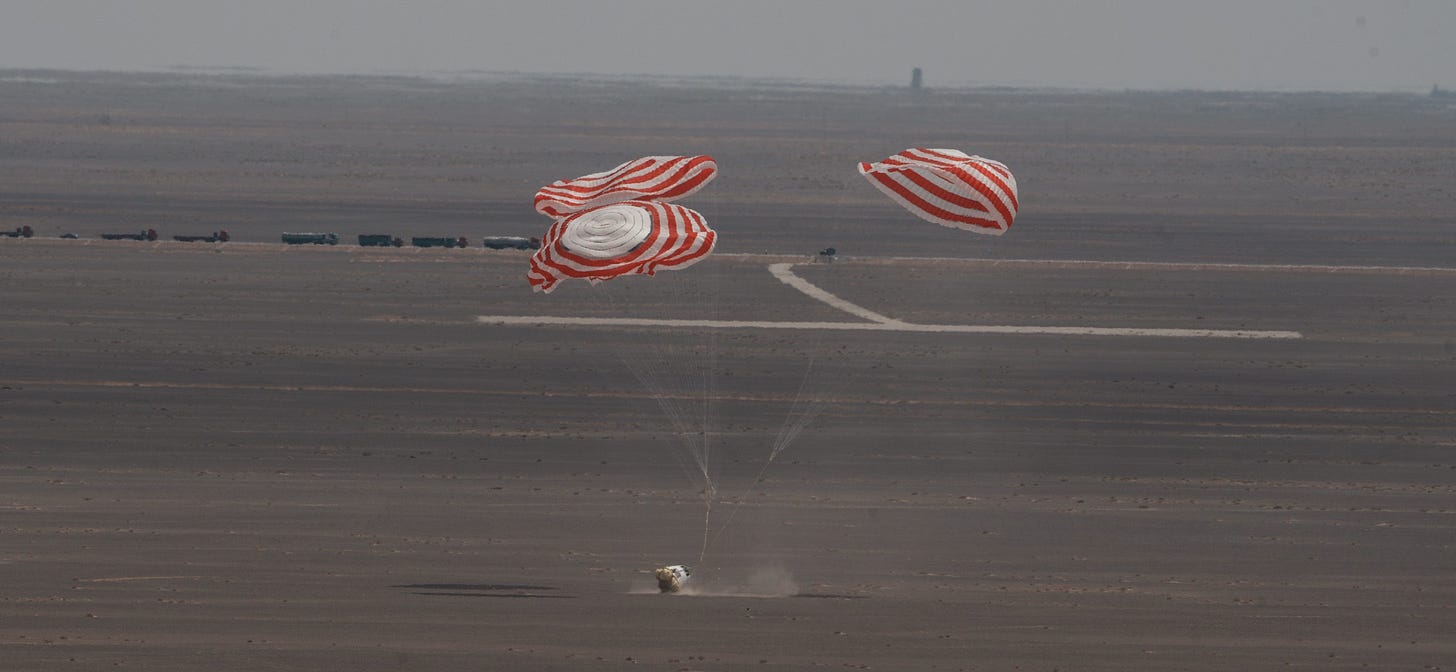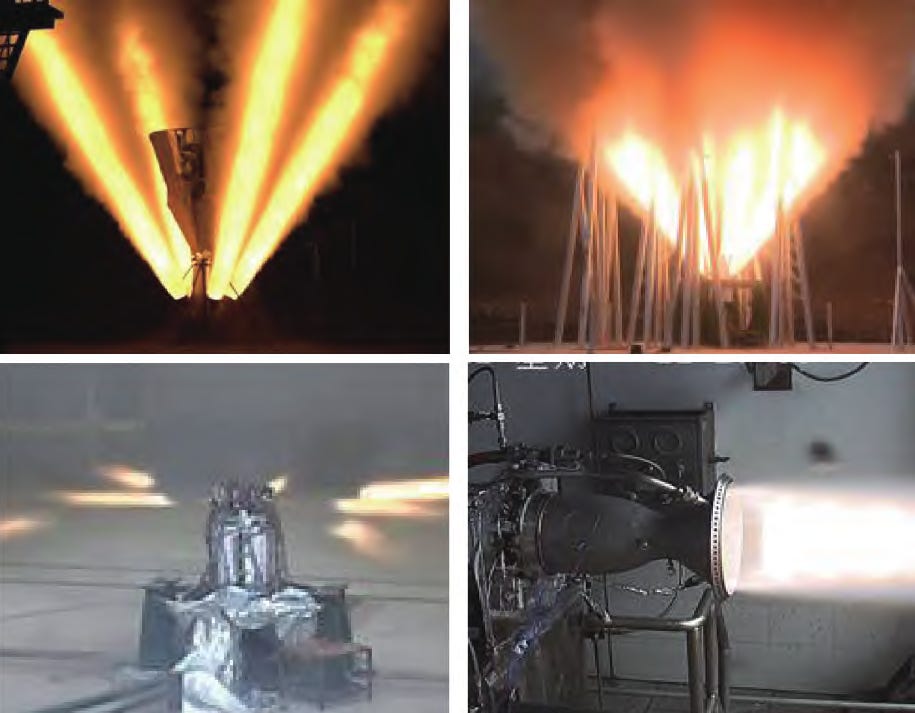Mengzhou Soars for Zero-Altitude Abort Test!
China's next-generation spacecraft is one step closer to flight
The China Manned Space Agency announced earlier today, June 17th, that the Mengzhou crewed spacecraft performed its zero-altitude launch escape test, known as a launch pad abort test in the West. This test took place from the Jiuquan Satellite Launch Center’s small solid launch vehicle pad, where rockets like Ceres-1 fly from, at 12:30 pm China Standard Time (04:30 am Universal Coordinated Time).
For the test, a command was sent to the Mengzhou capsule to sever connections to a dummy service module and ignite the launch escape systems motors, four to pull the vehicle away and one smaller one with eight nozzles to control flight direction. After twenty seconds of flight with the escape system, the capsule separated to head back toward the ground.
Now free of the escape system, the Mengzhou capsule rocked toward a stable descent angle before deploying two drogue parachutes to slow it enough to release the three large main parachutes. The three main parachutes deployed successfully to slow Mengzhou’s descent to a crawl relative to the ascent. During the slow descent, the capsule’s heat shield was also released, allowing airbags to inflate.
Two minutes after the Mengzhou blasted off, the capsule touched down in Jiuquan’s surrounding desert, cushioned by airbags underneath the capsule. The three main parachutes floated down shortly after, after which recovery teams approached to retrieve the capsule.
This test was critical for the safety of crew members before they fly onboard the vehicle a few years from now. As such, following the test, the China Manned Space Agency noted:
“Mengzhou spacecraft system assumes the overall function of escape and is fully responsible for the two tasks of escape and life-saving. Through the test, the escape life-saving subsystem and related large systems of the Mengzhou manned spacecraft were comprehensively assessed, and the correctness and matching of the design of escape timing, escape separation, escape ballistic closed-loop control were verified, and the escape real flight parameters were obtained.” — “The success of this test has laid an important technical foundation for subsequent manned lunar exploration missions.”
If there are any problems with this translation please reach out and correct me.
A few days ahead of this test, China Central Television released a report regarding launch escape systems for crewed spacecraft, which briefly touched on Mengzhou’s launch system. That report notes that due to the density of launch infrastructure at Wenchang, Mengzhou’s escape systems boasts a higher thrust-to-weight ratio, compared to Shenzhou, to pull the spacecraft out toward the ocean quickly. Additionally, the report stated that should a launch abort be triggered late into flight, Mengzhou’s propulsion systems on the service module can propel the spacecraft a safe distance away or into orbit. Testing of launch abort systems was also conducted prior to today’s test.
Next up for Mengzhou, before the spacecraft carries taikonauts, will be an in-flight abort test later this year. This could be similar to NASA’s Orion in-flight abort test or SpaceX's Crew Dragon.
Ending their Weibo post regarding the test, the China Manned Space Agency added a small update to the overall lunar program:
“In addition, the development of spacecraft such as the Long March 10 carrier rocket and lunar lander for manned lunar exploration missions is progressing steadily, and relevant tests will be organized and implemented as planned.”
In the near future, the Mengzhou spacecraft is set to perform missions to the Tiangong Space Station, carrying seven crew members atop a Long March 10A, and to the Moon, with three taikonauts aboard a Long March 10.
Test video via China航天, 航天面面观, and 卡尔达瓦里希 on Weibo.






